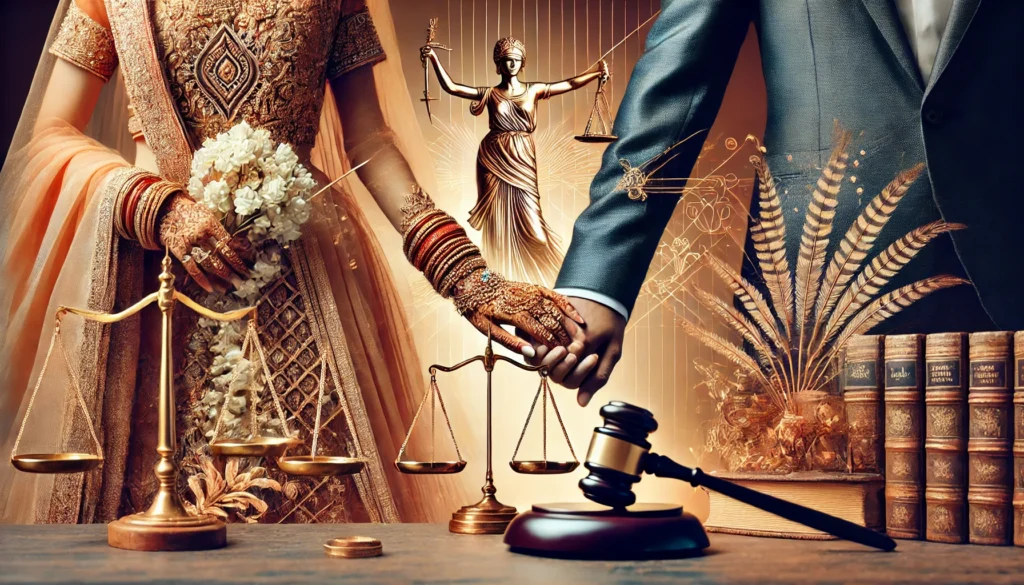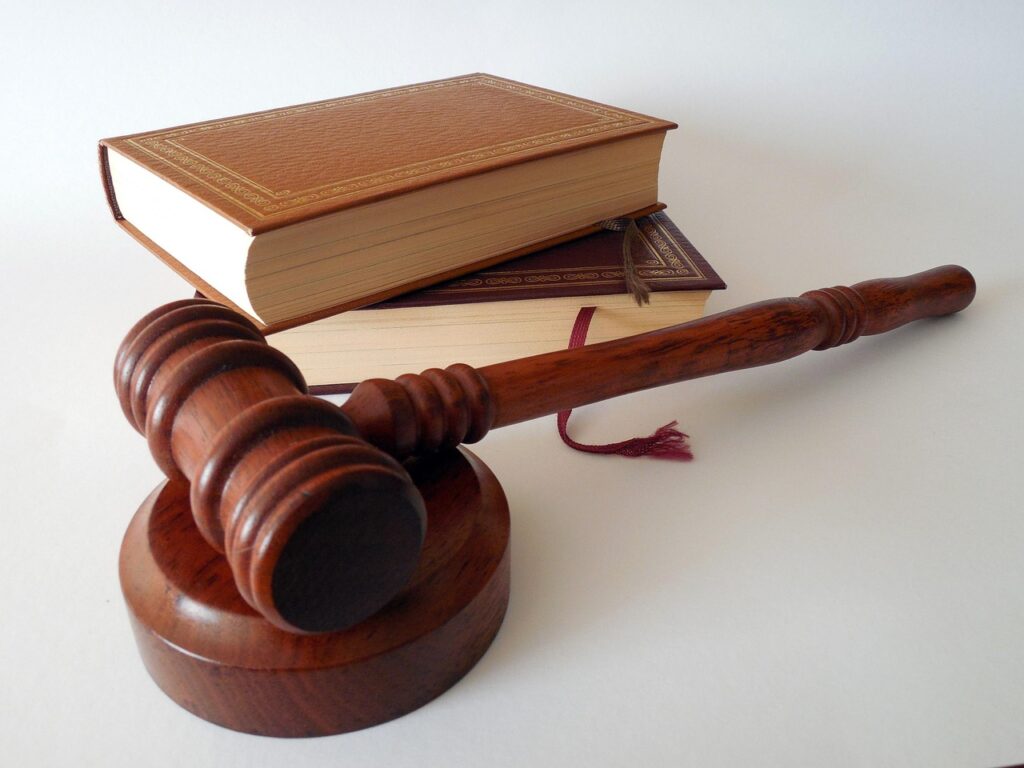Published on 18th February 2025
Authored By: Kashi
Vellore Institute of Technology, Chennai
OVERVIEW OF THE CASE
This case is one of the landmark Supreme Court of India that established the basic structure doctrine of the Indian Constitution. This case is also known as the Fundamental Rights case. The case came at a time when the Indian government had been increasingly using the Constitutional Amendment process to change provisions related to property rights, specifically through the 24th Amendment (1971), which sought to give Parliament the power to amend any part of the Constitution, including fundamental rights. The case was filed by Kesavananda Bharati, a religious leader and landowner who challenged the Kerala Land Reforms Act. This case is considered as one of the most important judgements in the Indian legal history. It has had far reaching consequences for the constitutional development in India.
FACTS OF THE CASE
- The build-up to Kesavananda Bharati began in 1967 through the [1]Golak Nath case when the Supreme Court’s eleven judge bench held that the State cannot amend the fundamental rights which are present in Part III of the Indian Constitution. This judgement led to the start of a heated debate on doctrine of basic structure
- His Holiness Sripad Galvaru Kesavananda Bharati, the lead petitioner in this case, was the leader of the Edneer Mutt, a religious sect in Kerala’s Kasaragod district. Kesavananda Bharti had some plots of land in the sect that he owned in his name. [2] The Kerala State government enacted the Land Reforms Amendment Act in 1969, which conferred upon the government the right to acquire some of the land owned by Edneer Mutt, of which Kesavanand Bharti was the leader.
- On March 21, 1970, Kesavananda Bharti filed a writ petition in the Supreme Court under Article 32 of the Indian Constitution to enforce his rights guaranteed by Article 25 which confers the right to practise and propagate religion, Article 26 which guarantees the right to administer religious affairs, Article 14 provides right to equality, Article 19(1) (f) provides freedom to acquire property, and Article 31 which provides for Compulsory Acquisition of Property.
- While the petition was still pending the Apex court, the Kerala government passed another act, i.e., the Kerala Land Reforms Amendment Act 1971.
- Kesavananda Bharati filed a petition against the Kerala government’s Land Reforms Act, 1963. The law aimed at limiting the ownership of land by religious institutions and individuals, which Kesavananda Bharati argued violated his fundamental rights under Article 19 (1)(f) (the right to property) and Article 25 (freedom of religion) of the Constitution.
- The petitioner argued that the Kerala Land Reforms Act violated his fundamental rights, and he contended that Parliament could not alter or amend the Constitution in such a way as to take away these rights.
ISSUES OF THE CASE
- Whether Parliament has the power to amend the basic structure of the Constitution of India?
- Whether the fundamental rights guaranteed under Part III of the Constitution could be altered or taken away through constitutional amendments?
- Whether the amendments made by Parliament could violate the fundamental rights guaranteed by Part III of the Constitution?
LEGAL REASONING
The question whether the fundamental rights set out in Part III of the C:Onstitution could be taken away or abridged by amendment of the Constitution was first considered by this Court in [3] Sankari Prasad v. Union of India, [1952] S.C.R. 89. In Sankari Prasad the validity of the Constitution (First Amendment) Act 1951, was challenged.
Kesavananda Bharati was a Hindu monk who served as the head of Edneer Mutt in Kerala. The Kerala Government had passed a law attempting to control religiously owned property under the Two State Land Reforms Acts.
Article 26 gives power to any person or trust to manage any religious property. But the Kerala government tried to create some restrictions in this right. Nani Palkhivala, a senior advocate, convinced Kesavanda Bharati to file a Public Interest Litigation as Bharati had a Fundamental Right to manage the property.
The case went to the Kerala High Court and later on to Supreme Court where the hearing went on for sixty eight days with thirteen judges on the bench.
The dispute was based on the interpretation of Article 368 which sanctioned amending authority to the Parliament with the contention being that whether the Fundamental Rights could be subject to alterations. This issue was earlier contested in [4]Golak Nath v. State of Punjab where the court established the limits upon the amending power of the Parliament.
They ruled that the Parliament cannot amend the Fundamental Rights and would have to make new laws to make any changes to them, which would require them to adhere to Article 13 of the Indian Constitution. In Kesavananda Bharati v. State of Kerala case, Articles 24, 25 and 29 were challenged wherein the government contended that they had the powers to amend under Article 368 of the Indian Constitution.
JUDGEMENT
[5]While the Supreme Court held that the Parliament does have the authority to amend, overturning some of the rulings of the Golak Nath case, they established a new limitation on those amendments: they cannot amend the basic structure of the Indian Constitution.
The bench, with a majority of 7:6 held that the 24th Amendment of the Indian Constitution was intra vires and therefore, the government did have the authority to alter the Constitution but with the limitation that such amendment cannot amend the basic structure of the Indian Constitution, which can fall under the scrutiny of judicial review. The court stated that the word ‘amend’ in Article 368 does not provide the Parliament the power to alter the basic structure of the Indian Constitution. Therefore, any constitutional amendment must be subject to passing the test of the doctrine of basic structure.
Therefore, the money paid to the owners of whom the state would be taking the property of, must not be unreasonable. Further, it struck down the part where the amendment removed the law from the scope of judicial review.
AFTERMATH OF THE JUDGEMENT (POST LAW)
The aftermath of the judgement was rife with allegations that Indira Gandhi had used illegal ways to tamper the election process, leading to a case being filed against her by [6] Raj Narrain. When the case was received by the Supreme Court, Indira Gandhi’s government brought the 39th Amendment which stated that there can be no legal cases on the Prime Minister of India. But the Supreme Court held that this amendment was going against the basic structure doctrine of the Indian Constitution which was mentioned in the Kesavananda Bharati case.
In [7] Minerva Mills vs Union of India , the court examined the validity of the 42nd Constitutional Amendment which aimed to counteract the effects of the Kesavananda Bharati judgement. Articles 4 and 55 through this amendment would specifically state that the Parliament’s amending powers would be unfettered and no limitations can be placed on it. These were introduced in the state of emergency placed during Indira Gandhi’s regime. The government’s blatant power-mongering is visible in these actions but the Minerva Mills judgement struck down these Articles of the 42nd Amendment, therefore, upholding the doctrine of judicial review. The argument made in the judgement for this decision was that the power of judicial review was also part of the basic structure of the Constitution.
CASE ANALYSIS
The Kesavananda Bharati judgment is a challenging document to comprehend and analyze due to the wide range of differing opinions expressed by the eleven judges involved, which ultimately converge. It also embodies the doctrine of the basic structure, deliberately remaining vague and open-ended, making it a nearly impossible task to interpret and constrain within the confines of written law.
[8]The myths that the court deals with are problematic and undermines what is very much considered a groundbreaking judgement. For starters, the court argues that the 25th Amendment infringes upon the right to property and the court itself is a champion of protecting an egalitarian social order.
A section of the judgment also explores the idea that the Directive Principles of State Policy embody values of ‘social justice’ and, as a result, take precedence over fundamental rights. controversial because it includes Articles 47, 49 and 51. They deal with trying to eradicate cow slaughter, preservation of monuments and a decree to abide by international treaties. While protection of all animals from mass breeding, culling and the mental trauma for the benefit of human consumption may classify as social justice but arbitrary rulings to safeguard one animal in a country where the leather industry flourishes seems counterproductive to purported vegan social justice from the state’s end. So while all DPSPs may not be social justice, fundamental rights clearly are as all of them are intended to provide citizens democratic freedoms as well as protection from the state from violating those given freedoms.
CONCLUSION
The Kesavananda Bharati v. State of Kerala case is pivotal in safeguarding the Indian Constitution. Despite numerous amendments over time, it was affirmed that the Constitution retained its original essence, unlike the American Constitution, which underwent fundamental shifts due to case law. The doctrine of the Basic Structure offered a foundational framework, establishing a harmonious balance between legislative and judicial authority, while simultaneously ensuring the protection of citizens through a system of checks and balances. In its entirety, it upheld the Rule of Law.
REFERENCES
[1] Golak Nath and Ors. v. State of Punjab, AIR 1967 SC 1643 (India).
[2] https://www.alec.co.in/judgement-page/kesavananda-bharati-v-state-of-kerala
[3] Sankari Prasad v. Union of India, (1952)
[4] Golak Nath and Ors. v. State of Punjab, AIR 1967 SC 1643 (India).
[5]https://www.researchgate.net/publication/359505004_Kesavananda_Bharati_Vs_State_of_Kerala_Case_Summary/link/
[6] 1975 (Supp) S.C.C. 1 (India).
[7] Minerva Mills Ltd & Ors Vs Union Of India & Ors 1980 AIR 1789, 1981 SCR (1) 206
[8] Kesavananda-Bharati-v.-State-of-Kerala-A-Case-Commentary1.pdf



